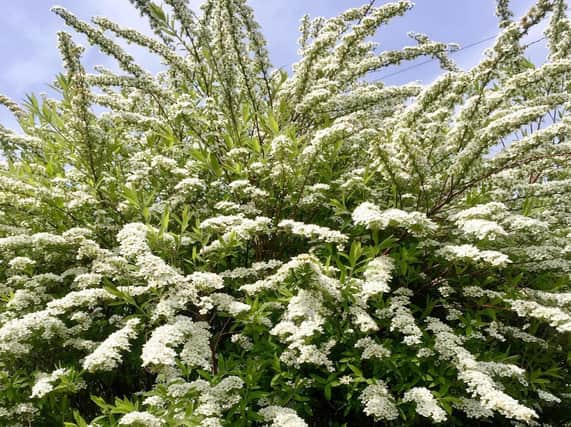How eye-catching Spiraea shrubs can brighten up any garden


There are those who shine and there are those content to let others take centre-stage. Such is the lot of the Spiraeas, a family of shrubs that have become commonplace in the British garden.
They grow quickly, tolerate most soils and situations and flower well, but few provide the impact of, say, a rhododendron or a tree peony. But they are tough and accommodating, so they are popular deciduous shrubs.
Advertisement
Hide AdAdvertisement
Hide AdIn spring, the likes of Spiraea ‘Arguta’ aka the bridal wreath, explode with thousands of tiny, white blooms. The flowers are produced on last year’s wood, which is why any pruning should be done in early summer after the blooms have faded.
Give it a well-drained yet moist soil and plenty of sun and it will produce an annual show to cheer up any gardener – at least for a few weeks before other shrubs begin to wake up.
The summer-flowering spiraeas are a different matter – their blooms are predominantly red or pink and their autumn foliage is often eye-catching.
The most common is S ‘Anthony Waterer’ Japanese spiraea, which produces masses of carmine-pink flowers from July through until September, but hot on its heels is ‘Goldflame’, a particularly hardy variety that grows best in full sun and a fertile soil.
Advertisement
Hide AdAdvertisement
Hide AdIt’s a colourful shrub whose spring foliage is bronze-red. As the leaves mature, they turn bright yellow, then luminous green. In mid- and late summer, clusters of dark pink flowers appear.
‘Goldflame’ is compact and easy to grow and can be trimmed to form an informal hedge. Deadhead it after flowering and in early spring, hard-prune the flowered stems to a foot from the ground.
The same treatment applies to all summer-flowering varieties; spring-flowerers should have old and damaged growth removed once the blooms have finished their work.
And if there’s insufficient room for a ‘normal’ spiraea, consider S japonica ‘Alpina’, also known as the alpine spiraea or daphne spiraea, a low-growing, rounded, deciduous shrub which has pink flowers in flat-topped clusters in late spring to mid-summer. The leaves are small, oval, sharply toothed and blue-green in colour. In autumn, they turn red and orange.
Advertisement
Hide AdAdvertisement
Hide AdIt’s a shrub that normally grows to a foot in height and perhaps three feet in width so it’s perfect for the front of a border.
Support The Yorkshire Post and become a subscriber today. Your subscription will help us to continue to bring quality news to the people of Yorkshire. In return, you'll see fewer ads on site, get free access to our app and receive exclusive members-only offers. Click here to subscribe.